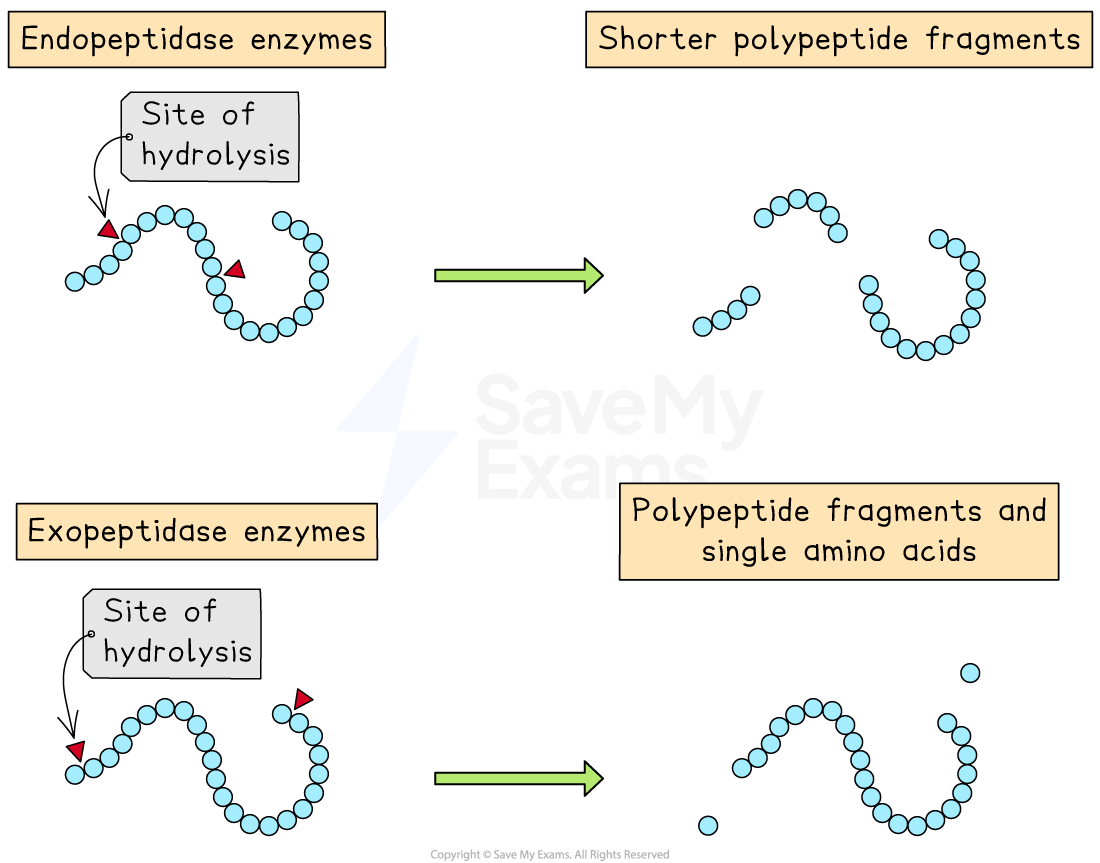Enzymes in Digestion (AQA AS Biology): Revision Note
Exam code: 7401
Did this video help you?
Enzymes in digestion
Digestive enzymes are extracellular enzymes, meaning that they function outside the body cells
There are three main types of digestive enzymes:
carbohydrases
lipases
proteases
Carbohydrate digestion
Carbohydrase enzymes are a group of enzymes involved in carbohydrate digestion; examples include:
amylase
maltase
lactase
The process of digesting starch into simple carbohydrates is as follows:
Amylase hydrolyses starch into the disaccharide maltose
Amylase is made in the salivary glands, the pancreas and the small intestine
Maltose is then hydrolysed into the monosaccharide glucose by maltase

Maltase is a membrane-bound disaccharidase, meaning that it:
is attached to the cell-surface membranes of the epithelial cells lining the small intestine
breaks down disaccharides into monosaccharides

Lipid digestion
Lipid digestion involves the action of:
lipase enzymes
bile salts
The process of lipid digestion is as follows:
emulsification
Partially digested food arrives in the small intestine and mixes with bile
Bile salts bind to large lipid droplets and breaks them into smaller droplets; this is emulsification
The resulting small lipid droplets have a large surface area on which lipase enzymes can act
Lipase enzymes in the lumen of the small intestine break down lipids to glycerol, monoglycerides and fatty acids

Examiner Tips and Tricks
Be aware that the action of bile is not chemical digestion; bile is not an enzyme and does not carry out chemical breakdown of lipids.
Protein digestion
Protein digestion involves the action of different types of protease enzymes:
endopeptidases
exopeptidases, including dipeptidases
Protein digestion involves the following:
Endopeptidase enzymes in the stomach and small intestine hydrolyse peptide bonds within polypeptides, creating shorter polypeptide chains
Exopeptidases hydrolyse peptide bonds at the ends of polypeptide chains, producing single amino acids
Dipeptidases are a type of exopeptidase that break down dipeptides into individual amino acids

Membrane-bound dipeptidases are attached to the cell surface membrane of epithelial cells in the small intestine

Examiner Tips and Tricks
Remember that:
endo = within
exo = outside
So, endopeptidases act in the middle of polypeptides, and exopeptidases work around the outside.

Unlock more, it's free!
Did this page help you?